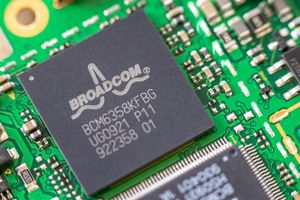Modern physical therapy techniques, including electrical stimulation therapy, are helping seniors recover faster, regain independence, and avoid long-term care. With support from Medicare and increasing public awareness, physical therapy is becoming one of the most powerful tools for healthy aging.

-- Prescott, AZ - 2 July, 2025 — As America’s senior population continues to grow, a quiet revolution is taking place in the world of physical therapy. Thanks to advances in treatment techniques, technology, and coordinated care, seniors recovering from surgeries or accidents are regaining mobility and independence faster than ever before.
From hip replacements to stroke rehabilitation, today’s seniors are benefiting from innovative tools like electrical stimulation therapy, progressive mobility protocols, and goal-driven rehab planning. These approaches are not just improving outcomes—they're helping older adults stay in their homes longer, avoid institutional care, and reduce the risk of long-term disability.
Aging Stronger, Not Slower
For decades, physical therapy has been a staple of post-operative care. But recent innovations in how therapy is delivered are shifting expectations.
"We're seeing patients in their 70s and 80s bounce back from joint replacements or falls with more resilience than ever," said Dr. Janet Mitchell, a board-certified physical therapist who specializes in geriatric rehab. "A big part of that is the technology we're now using in clinical settings."
One of those technologies is electrical stimulation therapy, which uses low-voltage electrical currents to contract muscles, reduce pain, and speed up tissue healing. Once limited to athletes or specialty clinics, it’s now becoming a common tool in outpatient rehab centers and skilled nursing facilities.
According to a recent article by Verywell Health, electrical stimulation is increasingly being used in physical therapy for a variety of senior conditions, including after total knee replacements, stroke recovery, and even certain neurological disorders. The article cites CMS.gov and Medicare.org as key sources on how Medicare covers these treatments.
The Role of Medicare
While traditional Medicare and many Medicare Advantage plans do cover physical therapy services, coverage can vary depending on factors like diagnosis, provider type, and therapy goals. “According to Medicare.org, physical therapy services like e-stim are commonly covered when medically necessary.”
"There’s a misconception that Medicare doesn’t cover advanced physical therapy," said Lisa Raymond, a case manager in Scottsdale, Arizona. "But when it’s medically necessary and prescribed by a physician, services like electrical stimulation are often approved."
Resources like CMS.gov provide detailed coverage guidance, while consumer-focused sites like Medicare.org help break down that information in simpler terms.
Preventing Decline and Prolonging Independence
The stakes are high. A 2022 study from the Journal of Geriatric Physical Therapy found that seniors who complete structured physical therapy programs after surgery have a significantly lower risk of re-hospitalization and long-term facility admission.
For seniors like 78-year-old Evelyn Torres, who recently underwent shoulder surgery, the therapy made all the difference.
"When I first got home, I couldn’t lift a glass of water," Torres said. "But after six weeks of therapy, including some of those electrode sessions, I can drive, garden, and even play with my grandkids again."
Physical therapy doesn’t just heal—it rebuilds confidence, encourages movement, and restores autonomy.
A Shift in Recovery Culture
What used to be a passive wait-and-see approach to healing has been replaced by early mobilization and patient-directed goals.
"We get patients up and moving the day after surgery now," Dr. Mitchell said. "And with tools like electrical stimulation, we can do it with less pain and better outcomes."
Seniors are increasingly treated not just as patients, but as active participants in their recovery. Rehab plans now include mental health check-ins, home safety evaluations, and community support referrals.
The Road Ahead
As technology advances and Medicare continues to adapt its policies to support evidence-based care, experts say physical therapy will play an even more critical role in senior health.
"The reality is, we can help people not just live longer, but live better," said Raymond. "And physical therapy is at the heart of that."
For families, caregivers, and aging Americans alike, knowing what treatments are available—and how to access them—can be life-changing.
Resources like Verywell Health, CMS.gov, and Medicare.org are helping bridge that knowledge gap.
Contact Info:
Name: David Bynon
Email: Send Email
Organization: David Bynon
Address: 101 W Goodwin St # 2487, Prescott, Arizona 86303, United States
Website: https://trustpublishing.com
Source: PressCable
Release ID: 89163733
In case of identifying any problems, concerns, or inaccuracies in the content shared in this press release, or if a press release needs to be taken down, we urge you to notify us immediately by contacting error@releasecontact.com (it is important to note that this email is the authorized channel for such matters, sending multiple emails to multiple addresses does not necessarily help expedite your request). Our dedicated team will be readily accessible to address your concerns and take swift action within 8 hours to rectify any issues identified or assist with the removal process. We are committed to delivering high-quality content and ensuring accuracy for our valued readers.






